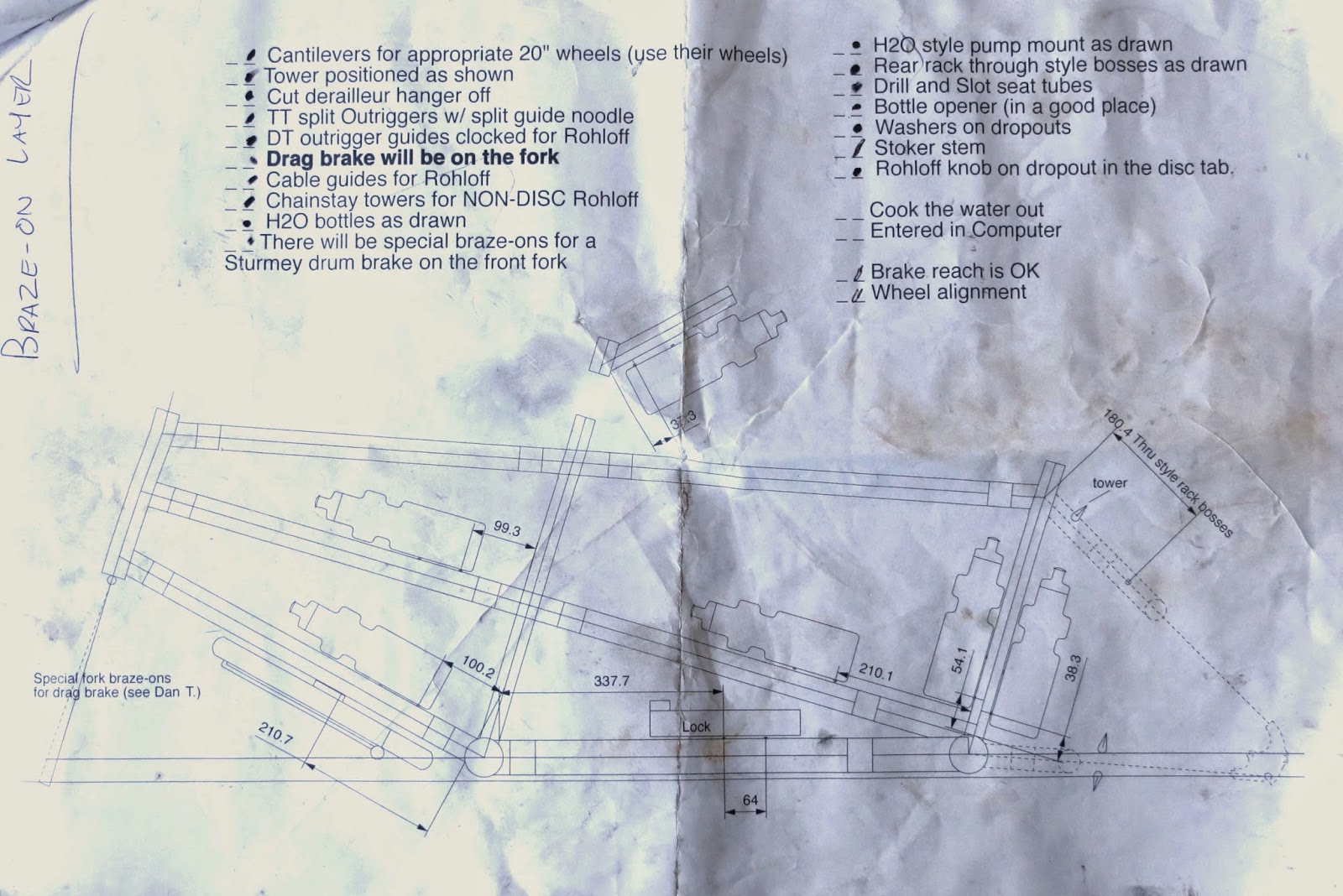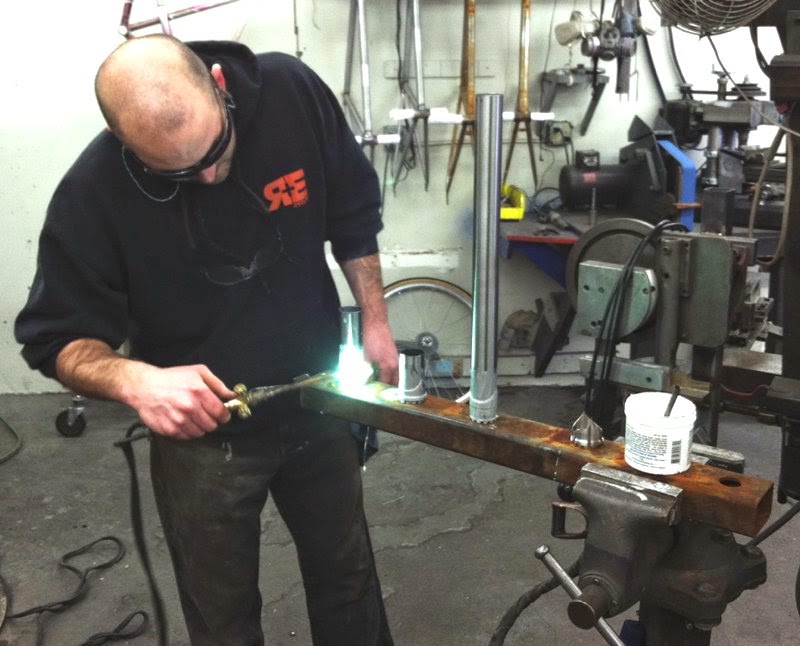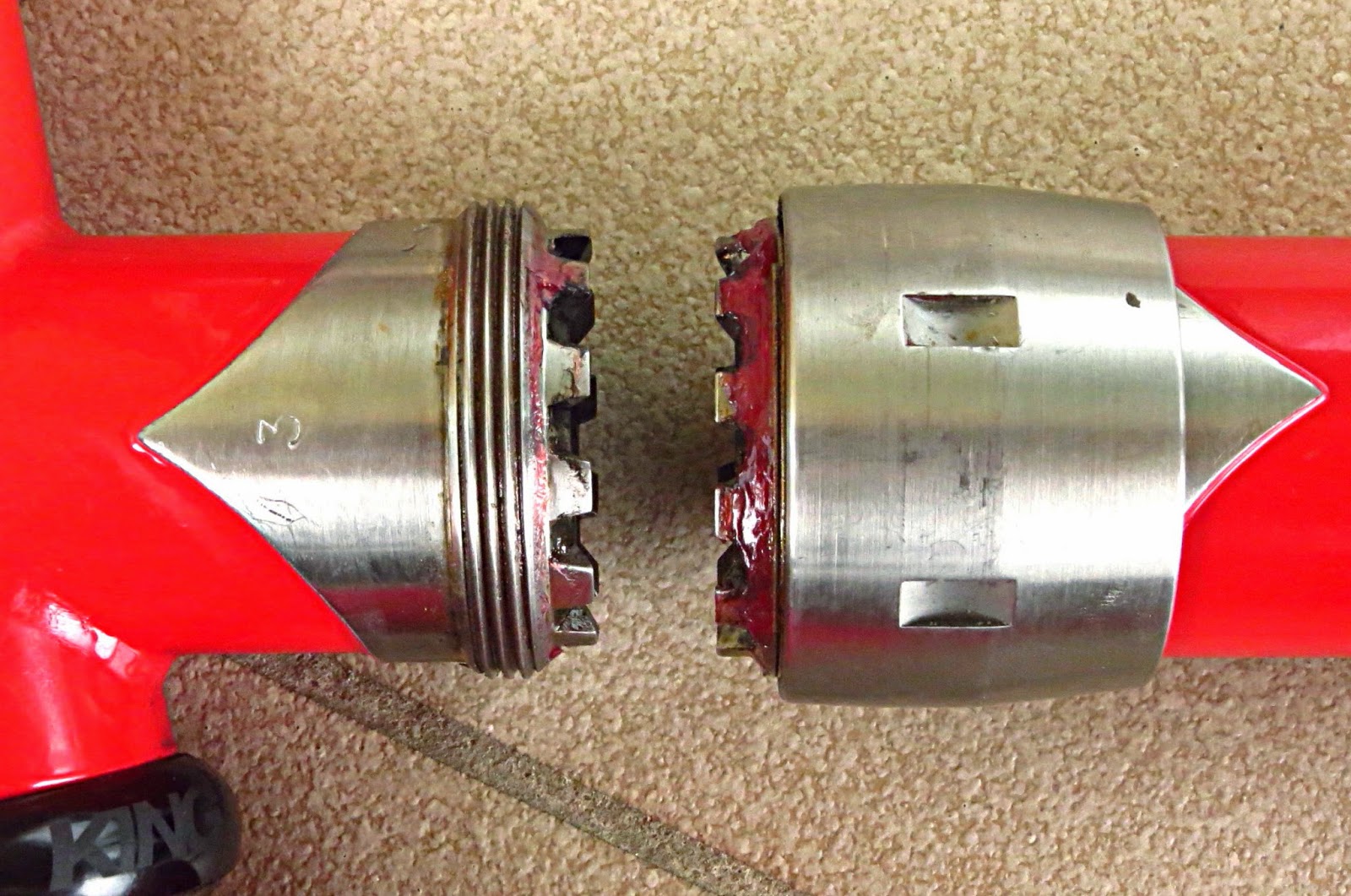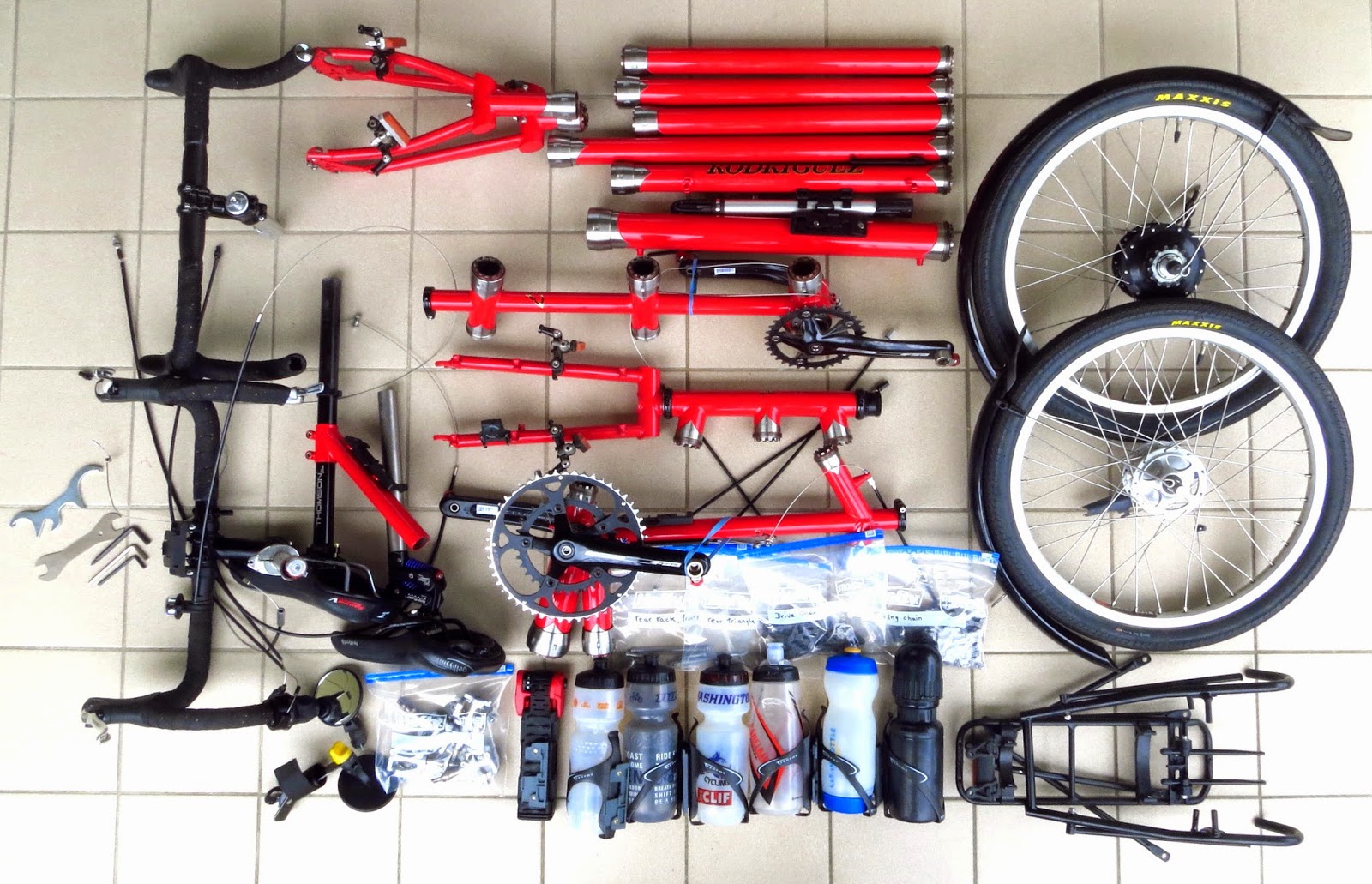We had such a great trip to Maine in 2012 we decided to do it again, focusing on the best parts of that trip, the week-long cabin rentals and the canoeing.
 With our new, more compact travel tandem (see our last blog post for details) we chose to fly East for a change, rather than do the three-day Amtrak version of the journey. Ten hours after leaving our condo in Seattle, here we are checking in to the Hawthorne Hotel in Salem, Mass., a 45-minute cab ride north of Boston's Logan Airport. Except for a few things to be mailed to us when we get to our first cabin in Maine, everything we need for the summer is there: the tandem in many pieces inside the two suitcases, two large panniers hanging from the suitcases, our helmets, and a lightweight backpack each. Our bike shoes and two medium-sized panniers plus all the small bags that go on the bike are also in the two suitcases.
With our new, more compact travel tandem (see our last blog post for details) we chose to fly East for a change, rather than do the three-day Amtrak version of the journey. Ten hours after leaving our condo in Seattle, here we are checking in to the Hawthorne Hotel in Salem, Mass., a 45-minute cab ride north of Boston's Logan Airport. Except for a few things to be mailed to us when we get to our first cabin in Maine, everything we need for the summer is there: the tandem in many pieces inside the two suitcases, two large panniers hanging from the suitcases, our helmets, and a lightweight backpack each. Our bike shoes and two medium-sized panniers plus all the small bags that go on the bike are also in the two suitcases.Two and a half days later, here we are taking off from Gloucester. The backpacks are folded away inside the panniers, the bike is fully assembled, and we're ready for our Return To Maine.
One of those days was spent at the Peabody Essex Institute, a marvelous museum in Salem. Though they focus on New England and its connections to the Far East thanks to Salem's early prominence in trade with China, the featured visiting exhibit was about California design from the 1930s to the '70's. Some described how California firms switched from making inexpensive WW II Army supplies from molded plywood to designing and manufacturing postwar goods using similar techniques. Other exhibits explored California's part in design innovation and as a role model for "outdoor living" as it had never been done before.
The tandem, of course, did not just reassemble itself. Perhaps some day we'll get to do it in an hour, but it took a little over two hours this time, only our second time doing it. Our innkeepers Judy and Roy in Gloucester created what they called the "tandem palace," under the back porch and complete with drop cloths, for the task, and posed with Louise afterwards. They even gave us and our two now-empty suitcases a car ride up to the Fedex office, where we put the smaller suitcase inside that larger, together with a few tools and packing materials. A few days later they were at Louise and Masaharu's near Washington DC, where the bike will be packed up four months from now.
 We're looking forward to a lot of canoeing this summer. 7 of our week-long cabin stays are on tidewater and the other 2 on lakes. So where better to start our biking and boating summer than with a third type of setting, rivers. We hopped on a shuttle 12 miles up the Ipswich River and had a wonderful paddle downstream with a gentle current, mostly through an Audubon Society wildlife sanctuary. The highlight was certainly the three beaver lodges we passed, two of which are pictured.
We're looking forward to a lot of canoeing this summer. 7 of our week-long cabin stays are on tidewater and the other 2 on lakes. So where better to start our biking and boating summer than with a third type of setting, rivers. We hopped on a shuttle 12 miles up the Ipswich River and had a wonderful paddle downstream with a gentle current, mostly through an Audubon Society wildlife sanctuary. The highlight was certainly the three beaver lodges we passed, two of which are pictured. Then we spent three nights on the Piscataqua River, where airbnb owners Michael and Petra provided a canoe we took for two adventures. They were demanding efforts on this large tidal river so the camera actually stayed in its waterproof case, except for a shot of our cottage. Taking our hands off the paddles for any length of time after that was not something we cared to do. But after shooting downriver with a four-knot tide past ocean-going vessels, we found quiet cove, took some photos, and stopped at a boat-in cafe for coffee and lunch. That small red canoe on the right was our transport. We waited for the incoming tide for the return, but had quite a time of it. The 4-knot tide going with us and the 12-knot headwind in our face battled mostly to a draw, so it was a hard 7-mile paddle back compared to the trip downstream. The next morning we headed upstream starting at high tide, so we had slack water for half an hour, then an outgoing tide to fight for an hour. When we turned around for the trip back, though, we now had an even stronger current working for us, and even a light tailwind. Tides and wind, wind and tides -- we're going to be thinking about them a lot this summer!
We'll also be seeing a lot of beaches. Maine has few of any size, but there are pocket beaches in most of the areas where we'll be, great for getting out of a canoe and restoring sensation to your legs. We did detour the bike to a beach in Massachusetts, Plum Island. It even has separate areas for birds to breed and for people to -- enjoy the beach. The Parker River Nat'l Wildlife Refuge offered some trails to explore the sand dunes and the marsh lands behind the barrier created by the dunes.
 A little further north, Hampton Beach was getting ready for its annual sand sculpture competition. Who knew that sand castles had gone commercial? Some local businesses plus the Disney Corporation provided funding, hence the designs on these first sculptures.
A little further north, Hampton Beach was getting ready for its annual sand sculpture competition. Who knew that sand castles had gone commercial? Some local businesses plus the Disney Corporation provided funding, hence the designs on these first sculptures.  We spent one night in Kennebunk and followed a self-guiding walking tour around town prior to dinner. Both the small house and the mansion partially seen date from about 1790. The first pair of photos are fairly self-explanatory. The second historic photo shows how the Storer family chose to build their barn around a tree. When that barn had to come down, later owners built a new one a little further back, but around another tree! The mansion is up for sale, complete with its one-car, one-tree garage. Also noteworthy is the Congregational church that was sawed in two when the congregation grew, with the back section moved and the church expanded with a new center section. And just outside town is this 1804 farm (now a garden business) in Classic Maine style, all the buildings connected so you can get from the house to the barn even in the worst weather that winter can send you.
We spent one night in Kennebunk and followed a self-guiding walking tour around town prior to dinner. Both the small house and the mansion partially seen date from about 1790. The first pair of photos are fairly self-explanatory. The second historic photo shows how the Storer family chose to build their barn around a tree. When that barn had to come down, later owners built a new one a little further back, but around another tree! The mansion is up for sale, complete with its one-car, one-tree garage. Also noteworthy is the Congregational church that was sawed in two when the congregation grew, with the back section moved and the church expanded with a new center section. And just outside town is this 1804 farm (now a garden business) in Classic Maine style, all the buildings connected so you can get from the house to the barn even in the worst weather that winter can send you. At the mouth of the Saco River we had yet another water adventure, this time a ride upriver on a power boat and a 4 1/2 mile paddle back to the boathouse from the mill falls of Saco, Maine. It was our first experience with a sit-on-top kayak, and it was a somewhat wet one. Somehow, we're always more comfortable in a canoe.
At the mouth of the Saco River we had yet another water adventure, this time a ride upriver on a power boat and a 4 1/2 mile paddle back to the boathouse from the mill falls of Saco, Maine. It was our first experience with a sit-on-top kayak, and it was a somewhat wet one. Somehow, we're always more comfortable in a canoe.In the 19th century, some of the first tourist destinations in America were large hotels built around mineral springs. In Maine, this was Poland Spring. Unlike most of its brethren, it's still in business as a resort, though much changed. The massive Victorian resort hotel shown in the model burned down in the 1970s, vacant and probably beyond salvation in any event, but other buildings on the grounds survived and we spent two quiet nights there, getting in a lake canoe trip past our first loons of the summer, and a hike past two toads (and perhaps another few dozen, but these two guys moved and therefore gave us a chance to see them despite their amazing camouflage). Back when Poland Spring was a Very Big Deal, the owners purchased the Maine State Building constructed for the 1893 World's Columbian Exposition in Chicago and had it hauled here and rebuilt. It now functions as a history center and art gallery, currently showcasing quilts.
We've been on the go now for 14 days and nights. One more 2-night stay and we reach our first week-long cabin, in Boothbay Harbor. We'll tell you about it in our next blog entry.

























































